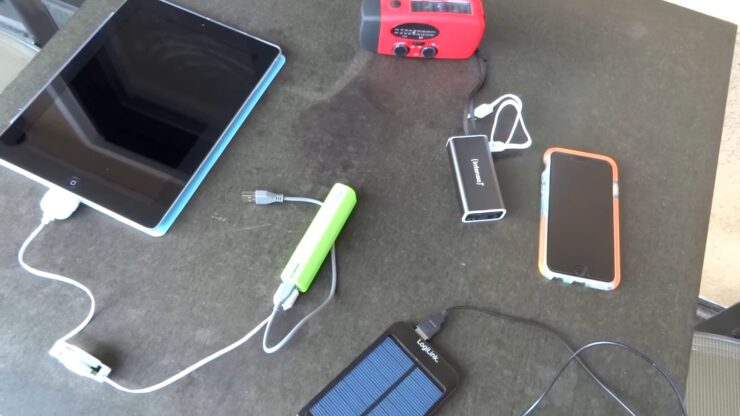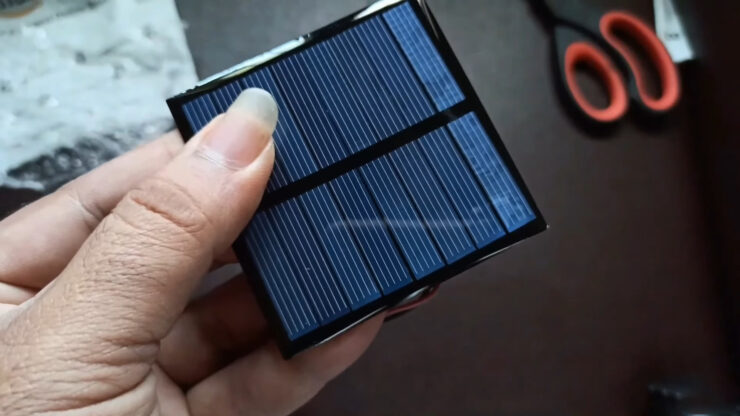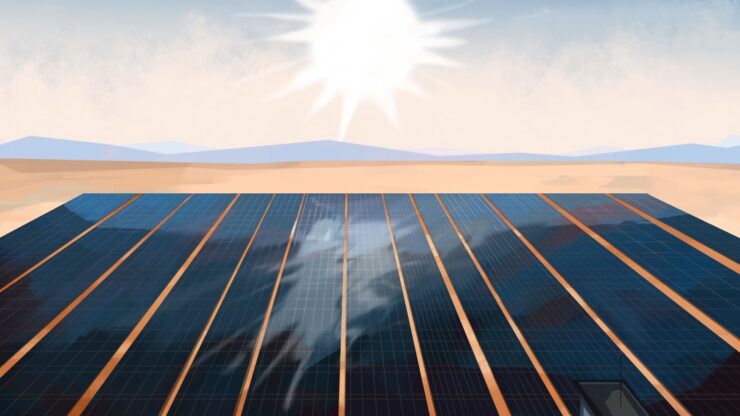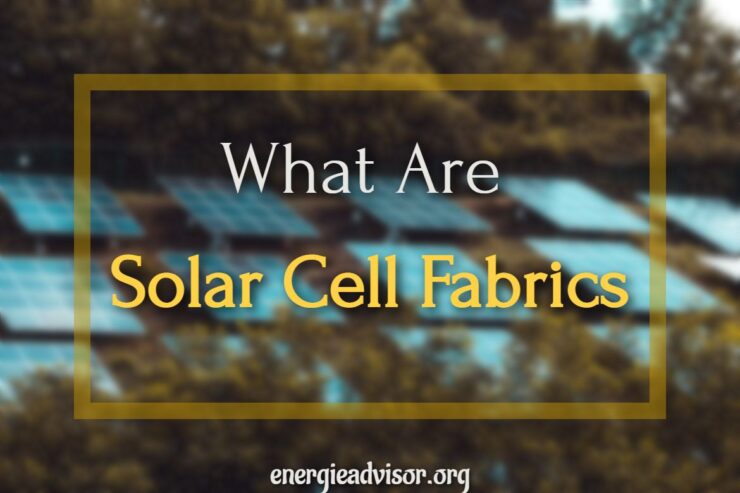The solar industry gave us a lot already. We are in a situation where we don’t have to be in a grid system, but to proudly present ourselves as an independent household that generates its own power. We can light up our backyard or sheds with the help of solar lights. We can heat the water for our home needs or for our pool, provide electricity for our phone or laptop when we are off camping or sailing and do many more things relying only on the power of the sun.
But all those things demand having a firm object in the shape of a solar panel in our hands or our roof. The next step in the development of the solar sector provided us with something we call solar cell fabric, a novelty that will make our lives easier and more leisurely. And given that our current generations are all about comfort, this is probably something we all are going to love.
What Do We Mean by Solar Cell Fabric?

Solar cell fabric is an actual fabric that has photovoltaic cells embedded on top of it, and therefore the ability to generate some electricity when exposed to the sun’s light. We are talking about thin-film cells that are quite flexible, so they can be sewn onto the fabric, and quite more affordable to produce than classic silicone-based cells.
For a long time, this was only a dream, a fiction – the ability to wear little solar panels on our wardrobe, wherever we go, without feeling their weight, without being even aware they are there, with us all the time. But thanks to the technological step forward and thorough research, we are finally able to test this impressive achievement and see if it fits our lifestyle.
Benefits of Solar Cell Fabric
There are more than a few great benefits solar cell fabric will bring into our lives. We listed them in a manner that reflects the needs of today’s people.
1. Ability to Charge Electronic Devices

Imagine walking around the whole day, taking pictures with your smartphone, answering some calls, writing few mails, texting and scrolling through your social media feed without having to worry about your battery status, or thinking about places you can go to charge your phone.
Sure, there is always an option of using power banks, but as it often happens, you may forget to bring them with yourself or to charge them. This way, with clothes that have integrated solar cells, you will be calm and relaxed all the time. All you need is a little bit of sun to make those cells work and generate electricity, and then you can simply plug your phone or other devices to the USB port placed somewhere on your clothing.
2. Reduction of Electricity Consumption
Clearly, if we don’t charge our phones in our houses or any other place but with our solar panel fabrics, we will definitely spend significantly less electricity. If this patent comes to life in a full capacity, the reduction in electricity usage would be huge and noticeable.
It probably seems like charging these small smart devices isn’t meaningful in the overall electricity consumption context, but it’s actually quite the opposite. It’s an equation based on quantity.
Sure, it’s not something you, as an individual, should worry about, you will pay less than a dollar for a whole year of charging your phone since you will need 2kWh in total. But how many phones do you have in your household? And where are all those other small devices? Now multiple that with the number of people in the world.
3. Micro Size Solar Cells

In order for this patent to work, these cells needed to be extremely small, so you don’t feel their presence, their weight particularly. That was one of the greatest challenges when developing this technology – making them be the micro size and adequate addition to our clothing.
The developers had in mind the modern breathable pieces of clothes these cells need to become part of, so they adapted and shaped everything to that standard. One university research team wanted to know how sustainable this idea was, is it even manageable for these solar cells to be so small they could be integrated into the regular fabric, and jet to provide with real power after absorbing and generating sun’s light.
They were working with cells that were the size of fleas (3mm x 1.5mm), but they confirmed that despite this tiny package, the technology of these cells was a perfect real powerhouse. They tested these little solar bugs and proved they are working just as they should. You won’t feel them at all, and still, you will be able to charge your phone and Fitbit device, for example. They tested 200 individual cells that were generating 2.5 to 10 volts and up to 80 mill watts in power and came to this result.
4. Waterproof and Machine Washable Fabric

Another idea is to create these solar cell fabrics so they can do the work they should regarding generating power from the sun, but also to make them reliable and trustworthy. We don’t want a jacket or some other piece of clothes we need to treat differently, with some particular guidelines. People are impatient, they don’t want to think about things like that.
So three years ago, the University of Tokyo and Riken research institute presented a prototype of this solar fabric that’s waterproof and machine-washable. With that, the whole circle was made. Now, we have solar clothing that has integrated micro solar cells that can charge your small devices, and all that wrapped in up to date pieces you can wear every day and maintain the regular way.
This system is waterproofed thanks to the patent where each cell was laminated in a waterproof resin. Because of that, you can wear your solar cell fabric no matter what the weather is like – even when it is absolutely pouring outside.
Shortcomings of Solar Cell Fabric
Just like with anything else, there are some disadvantages or shortcomings of solar cell fabrics. And we need to address this too in order to approach this subject objectively. The main problem with this new technology is the fact that it is at the beginning of the development process.
Yes, it is sustainable, but we are talking about the prototype phase still. We would all like to try this on and see how it works in the real world, but at this moment, that is not possible. Due to many limitations, especially those that are protecting the micro-sized solar cells, there is still a lot of work to be done before everything goes fully public.
Even though it doesn’t sound fair, because the technology was proven as a good, reliable one, it will take a lot more time before you could go to the store and buy a shirt or jacket made out of fabric that has solar cells implemented. Right now, it looks like something a bit futuristic, but it is obvious that it can be real and quite accepted by society.
The Ways You Can Use Solar Cell Fabric

Besides clothes, this solar cell fabric can be useful in many ways. Those who were working on this patent came to the conclusion that solar tents, for example, created with this solar fabric, could be a great solution for people who lost their homes in some natural disaster or some other misfortune.
In that case, a solar tent would provide them with a shelter in the first place, but also with a power they will need for many purposes. It would be an easy and practical solution, and there wouldn’t have to be those huge and complex power generators installed.
In cases of emergency, creating a tent village would be a much more practical scenario than this current one, because it needs time to set everything up. So instead of waiting for those generators to arrive and to be set up, solar tents can be ready in a couple of minutes. This process needs less manpower, fewer resources, it’s quicker and super comfortable.
What Are the Ongoing Problems?
There are two serious things that question or limit the usage of this technology. The first one is the price. We have to take into consideration the fact that it takes a lot of money to create and implement a couple of thousands of solar cells into one piece of fabric. Those are microcells, yes, but they work just like the regular ones, and the cost of making them is not negligible, on the contrary.
There is also a question of battery in which generated power will be stored. Its design needs to be compatible and in alignment with the rest of the system. Then there are the connection ports that will physically allow this item to charge devices through, etc. The designers also need to think of the ways to attach these cells, so they don’t bother us when we wear the fabric that is covered with them.
The second issue is the one that is not in our power, but that can affect the technology greatly. It’s the question of sun’s exposure, or, more precisely, the fact that we all live in different parts of the world and that the amount of sun’s presence isn’t the same everywhere.
Northern Europe’s countries, for example, have a lot of hours during the year when the sun isn’t shining, or at least not strong enough for this to work correctly, especially when winter comes. So what then? We already know that solar panels work even when it’s cloudy outside, but with much lower capacity.
They are not as efficient as if they were exposed to bright and direct sunlight. And let’s not forget the fact that we are not always outside, even during summer. When we are sitting in the office, at school, at our own home, far from the sun’s reach, this patent won’t be able to supply us with enough power to charge our devices.
What Are the Expectations for the Future?
If the public becomes more and more interested in something like this, the fact is expenses for creating and implementing solar cell fabric will come down. It’s already happening, given that all around the world, there is the incensement of interest for solar technology overall.
So the amount of money needed for this type of experiment and creating prototypes will be more acceptable and realistic. With that, further research and development will be possible. The hope is, some of the clothing giants that are dominating the industry will become interested in investing in solar cell fabric.
Then, the next step is to keep welcoming this novelty into our everyday life. Besides creating solar tents we already spoke about, it would be great to see solar fabric enters different areas and products. It would be great to have solar cell curtains, for example, or solar car seats that could power up our phones and other small devices easily and unobtrusively. Some of the motoring giants like Toyota already used solar-powered technology to make their models more up to date and in line with modern trends.
Conclusion
In the last couple of decades, the world suddenly became extremely interested in renewable energy, especially in the solar system. It seems like we finally get how much we can get from the nature that surrounds us, but minus the pollution aspect we really needed to start thinking about.
After solar panel systems that helped us power up our homes, we managed to create the panels we can use when we are on the move, on camping, sailing, when going off the grid entirely, and now seems the perfect time to take the next step and invest in solar cell fabric.
This is something that could possibly be a huge hit, something we probably won’t be able to think of our lives without in a couple of years. The truth is, it will need some more time for this technology to develop properly and present itself with full capacity, there are still plenty of challenges ahead.
The experts need to find a way to make this technology less expensive and more affordable, as well as to create these clothing pieces truly resistible, but it’s just a matter of time when it will happen. We are sure it will be a huge success, the one that will completely flow up our minds.

